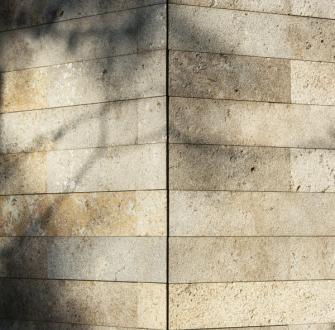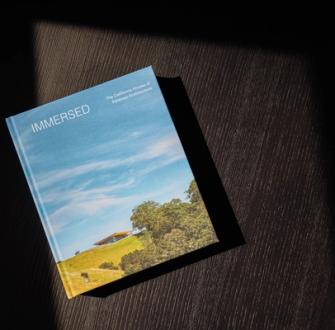
Craft: Ema Peter Photography
This week, we spoke with Ema Peter, a globally recognized photographer we've had the pleasure of working with on numerous photoshoots. Her images have been published in Architectural Digest, Objekt International, Dwell, Wired, The New York Times and in 2021, she was named the Top Architectural Photography Studio in the World by Architizer. Ema holds a Master’s degree in art and applied photography from the national academy of theatre and film arts in Sofia, Bulgaria.
What is your earliest memory of photography? How did your father's work influence your practice today?
My earliest memory is sitting with my dad in our homemade dark room, which was our kitchen at night, with blacked out windows. The light was green and I remember seeing the image appear on the exposed paper in the development tray. The sense of magic that comes with capturing a moment still lives in my head.
I feel as though my love for light came from him. I think he used to chase every moment, the shadow and light, people’s expressions, situations around him. There was always a camera in his hands - he used to see things no one else could and he taught me to look for the invisible.
What was your formal training like? How did you focus your practice specifically on architecture and interior design?
I finished my Master's Degree in Photojournalism at the National Academy of Theatre and Film Art in Sofia, Bulgaria. I truly wanted to be a photojournalist and I followed that passion in Paris where I was accepted as an intern at Magnum Photos. Some of the biggest names in photojournalism were alive - Bresson, Abbas, Elliott Erwitt, and Martine Franck. Having grown up in Eastern Europe during the fall of the totalitarian regimes, I had ample opportunity to practice photography, but when I moved to Canada I had a hard time getting a job. After a little searching, I got the chance to work for Expedia photographing hotels and resorts - I travelled the world and fell in love with architecture, and by infusing my passion for photojournalism into my work, I created my own style.
See more of Ema's work here, her photos of The Phoenix, or follow her on Instagram!
How do you approach a shoot differently based on its scale? For example, how does your strategy shift when shooting an airport or hotel vs. a small home?
I feel the strategy is always the same, follow the light. Recently, I've photographed a few of the bigger US airports, and in each we worked in a similar way as we would in a home - follow the movement of the sun. When there is no sun, we either create it or we try to create mood with the darkness. A rainy day can be as beautiful as a sunny one.
In most cases, with homes, we have the ability to light the interiors well and to include the homeowners in the shots to tell their stories, depending on the editorial requirements. With commercial projects, we usually use a large group of models and it becomes almost like a movie set - we try to plan exactly when people will be passing or using the spaces we need to photograph!
During your presentation to our office, you mentioned how you thoughtfully compose architectural photography that includes people. What is the relationship between people and space in your work?
I feel people are everything for a commercial space, residential too. Most of the interiors and architecture we photograph is already incredible, but it's created for people. Having models interact with the space in photography provides a sense of scale and creates life.
An image has to make us think “I want to be there” and this is best achieved with a human figure.
What is your relationship with natural light/weather in your shoots, and how has that changed throughout your career? I know you’ve been gravitating towards moodier weather recently.
The industry is changing - mood now is key. If I look at images from a few years ago, they were all about brightness and airiness - now all images seem to be more about feeling and mood. To be honest, I want to be able to know how to do all of it. We can use strobe lighting to create streaming light and a more even look, or use film lighting for drama. I think every project deserves its own style and I try to give that to my clients. I still stay true to how I feel the compositions should be executed and follow my style, but I also want every client to get that individual look they are aiming for.
Do you have any specific advice for an architect or designer when working for a photographer?
Have a relationship with someone who cares about your project as much as you do. When you find a photographer that is ready to attempt whatever possible to make the project look the way you imagined it or to surprise you with a completely different approach - that's when a project succeeds. The project is the hero!




